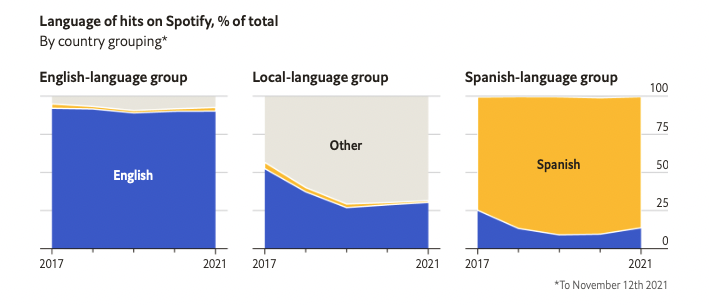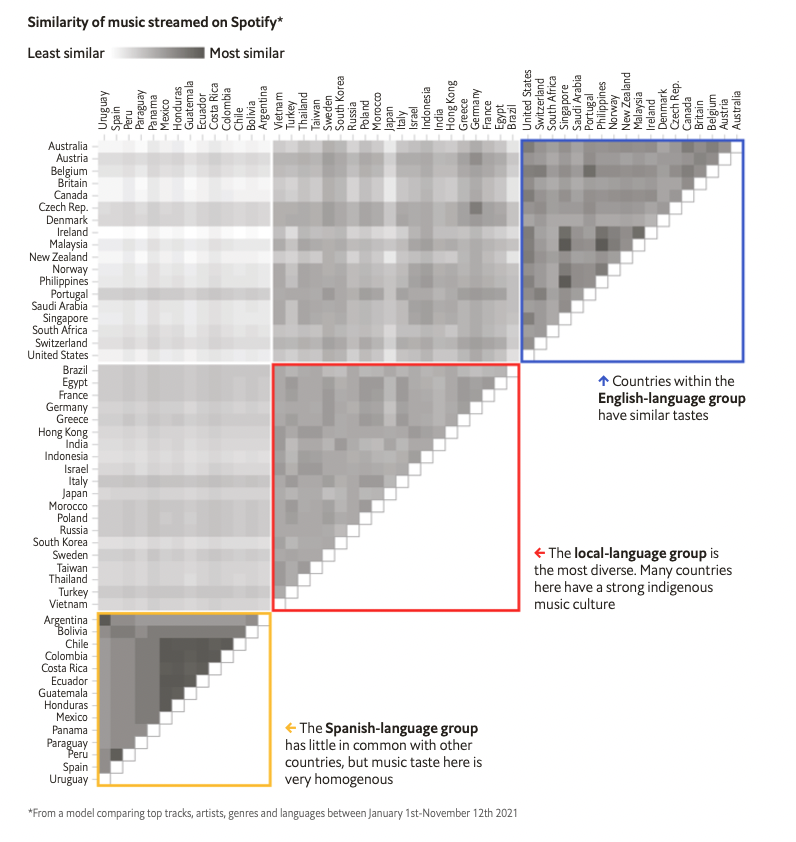XTM Returns with a Bang and Other Updates from the Language Industry
2022 Translation Technology Summit to Take Place in Silicon Valley
After two years of virtual conferences, the Translation Technology Summit (XTM)—one of the world’s biggest localization technology events—resumes in-person events with XTM LIVE 2022. The conference will take place in Silicon Valley on April 27th and 28th; the venue is the renowned Grand Bay Hotel San Francisco. Some of the language industry’s most prominent and innovative leaders will attend to discuss and debate trends, issues, and challenges in global communication.
The keynote speech will be delivered by Richard Yonck, the famous futurist and consultant known for his books Future Minds and Heart of the Machine about artificial intelligence and its place in the world today and tomorrow. Speaking alongside Yonck is Joel Sahleen, the Director of International Engineering at Domo, which is a US-based business intelligence and analytics platform; Sahleen will speak about data-driven strategies and Domo’s experience with localization.
Other speakers include Yuka Kurihara from Scaled Agile with her presentation on how “coupling agility with scalability can help businesses adjust to demand without their money or reputation taking a hit.” There’s also Sergey Parievsky from Juniper Networks and Yasmin Vanja from Sony who will remark on their experience in the language technology industry. Other prominent speakers include Talia Baruch (GlobalSaké CEO Cofounder), Rocio Gray (Localization Manager at Crown Equipment Corporation), Rafał Jaworski (Linguistic AI Expert at XTM International), Andreas Merz (Translation and Terminology Specialist EMEA at Crown Gabelstapler GmbH & Co. KG), and others.
Tickets for full conference attendance are at 900 USD, but the Super Early Bird Special price is three-fourths the amount. The same special prices apply to single-day attendees, with the first day selling for 400 USD (300 USD with the discount) and tickets for the second day currently at 600 USD (450 USD with the discount).
Waverly Labs Announces New Services and Hardware at This Year’s CES
Waverly Labs, developer of instant-translation earpiece devices, has recently announced a whole line of new services and products. There is Subtitles: a “two-sided customer service counter display facilitating hygienic, safe in-person interactions. There is also Audience: a “translation solution allowing speakers and lecturers to communicate with auditorium attendees.” Finally, Waverly Labs announced an updated version of their hit product Ambassador Interpreter: the “over-the-ear device providing near-simultaneous audio and text translations.”
Subtitles
Subtitles is a two-sided monitor embedded in a glass screen, providing simultaneous translation while maintaining COVID-19 protocols. After selecting a language on the touchscreen, users can talk naturally; meanwhile, the conversation is translated real-time and displayed as text on the other person’s screen in their chosen language. “The proprietary technology allows users to communicate like watching a subtitled movie and reading what the other person said,” says Waverly Labs. Subtitles is not only useful for translation, but also for transcription for customers with hearing impairments.
The device currently supports the following languages: English, Mandarin, Cantonese, Spanish, Arabic, Korean, French, German, Italian, Portuguese, Greek, Russian, Hindi, Turkish, Polish, Japanese, Hebrew, Thai, Vietnamese, Dutch. It also supports 15 Arabic dialects, 20 Spanish dialects, 9 English dialects, as well as the regional dialects of French, Portuguese, and Chinese. The device will be available in the second quarter of 2022.
Audience
Audience isn’t a device, but a translation solution particularly useful for “lectures, educators, and conference event organizers,” as it allows presenters to have their words translated to the audience in their respective languages. The process is simple: the speaker’s words are captured by the mic and then processed and translated in Waverly’s own cloud infrastructure. Audience members can then listen to a translated version of the speech—in their choice of languages—on their own phones or tablets. Audience is expected to be available in the second quarter of 2022 as well and supports the same languages and dialects as Subtitles.

Image credits: WaverlyLabs
The Economist’s Analysis of Spotify Data & the Decline of English
In an effort to investigate global music tastes and their evolution through time, researchers at The Economist gathered data on the top 100 tracks in 70 countries, examining over 13,000 hit songs in 70 languages alongside other data such as genre, lyrical language, and artist nationality. In doing so, The Economist hoped to group countries according to “musical similarity.” As for their research methodology and results, here’s what they say:
On these 320,000 records, we employed a principal-components analysis to assess the degree of musical kinship between countries, and then a clustering algorithm (known as k-means) to group them. Three broad clusters emerged: a contingent in which English is dominant; a Spanish-language ecosystem; and a third group that mostly enjoys local songs in various tongues. Across all, one trend emerged: the hegemony of English is in decline.
In the Spanish “cluster,” the percentage of English-language songs fell from 25% to 14%, a phenomenon The Economist attributes to artists such as Bad Bunny and Rauw Alejandro becoming internationally popular. Some other language clusters—especially Brazil, France, and Japan—have experienced even steeper declines in English-language songs: 52% to 30%.
The article does note that “despite its decline, English is still king. Of the 50 most-streamed tracks on Spotify over the past five years, 47 were in English.” However, it’s a hegemony that’s soon to be challenged by the rise of hit songs in languages other than English. With more linguistic variety in the global music scene comes a greater need for translation—people want to understand what they’re hearing and enjoying. The trend of international, multilingual music will counterintuitively bring people together, not set them apart, aided by the tools of translation freely available to all.

Image credits: The Economist, “What Spotify data show about the decline of English”

Image credits: The Economist, “What Spotify data show about the decline of English”
Elden Ring Message Mistranslations & Machine Translation Errors
The creators of the fiendishly difficult Dark Souls franchise recently released a new game, Elden Ring, which is just as devilish in its difficulty and beautiful in gameplay. Many users were amused by the in-game message system, which allows players from all over the world to leave messages for other players; the messages (which are written by choosing preselected words in the system) are translated via machine translation to fit the language of the reader.
According to reporter Iyane Agossah of DualShockers, however, many English-speaking Elden Ring players have utilized the messaging function to leave memes around the fantastical world of Elden Ring; by putting together the words “fort” and “night,” the players are able to spell out (phonetically) Fortnite, a popular multiplayer game that has become a meme sensation among younger generations and gamers.
This became a problem, however, when Japanese players read these messages, post-translation, and the joke was lost in translation. Agossah explains how Japanese players “spent quite a lot of time looking for some special event triggered at night inside forts, only to finally get the joke and realize it was a pointless effort.” While not the machine translation’s fault, the episode does leave a comment about machine translation’s inability to comprehend memes and popular trends, and how this misunderstanding in translation leads to actual hours being spent and wasted by players who take these mistranslations for face value.
A similar, but not as serious, episode happened vice versa, from Japanese to English, when the popular Japanese internet slang “草” (the equivalent of the English “lol”) was translated as “grass” in English. Times like these put to question the ability and feasibility of machine translation in real-life contexts. It’s one thing for a mistranslation to be amusing; it’s another for mistranslations to be misleading. As linguists, it’s important to be mindful of machine translation and its shortcomings before we rely on it too much.
References
https://slator.com/localization-thought-leaders-stakeholders-silicon-valley-xtm-live-2022/
https://xtmlive.com
https://multilingual.com/waverly-labs-talks-wearable-translation-techs-present-future/
https://multilingual.com/waverly-labs-ces/
https://www.economist.com/interactive/graphic-detail/2022/01/29/what-spotify-data-show-about-the-decline-of-english
https://www.dualshockers.com/elden-ring-fortnite-messages-meme-confuses-japanese-players/